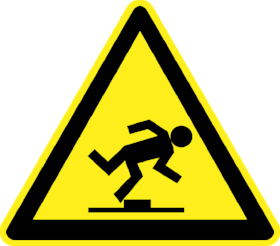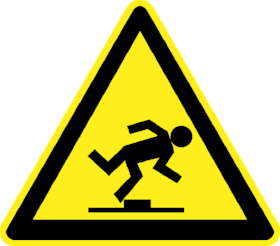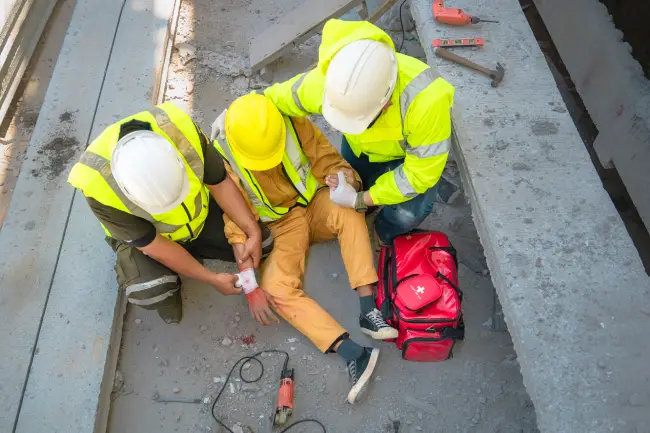OSHA's Walking-Working Surfaces and Personal Fall Protection Systems Final Rule: Quick Facts
 According to OSHA, falls from heights and on the same level (a working surface) are among the leading causes of serious work-related injuries and death. To better protect workers from slips, trips, and falls, OSHA has issued a final rule on Walking-Working Surfaces and Personal Fall Protection Systems (29 CFR part 1910, subparts D and I) that updates and clarifies standards and adds training and inspection requirements. By making these changes, OSHA estimates that 29 fatalities and 5,842 lost-workday injuries will be prevented every year. Keep reading to learn some quick facts about the final rule from OSHA.
According to OSHA, falls from heights and on the same level (a working surface) are among the leading causes of serious work-related injuries and death. To better protect workers from slips, trips, and falls, OSHA has issued a final rule on Walking-Working Surfaces and Personal Fall Protection Systems (29 CFR part 1910, subparts D and I) that updates and clarifies standards and adds training and inspection requirements. By making these changes, OSHA estimates that 29 fatalities and 5,842 lost-workday injuries will be prevented every year. Keep reading to learn some quick facts about the final rule from OSHA.
- The final rule updates and revises the outdated general industry Walking-Working Surfaces and Personal Protective Equipment (Fall Protection Systems) standards on slip, trip, and fall hazards, which are a leading cause of worker deaths and lost-workday injuries.
- The final rule applies to all general industry workplaces and covers all walking-working surfaces, which include horizontal and vertical surfaces such as floors, stairs, roofs, ladders, ramps, scaffolds, elevated walkways, and fall protection systems.
- General industry firms covered include building management services, utilities, warehousing, retail, window cleaning, chimney sweeping, and outdoor advertising.
- The new rule benefits employers by making compliance easier and less costly, providing greater flexibility through increasing the number fall protection options, and making the standard easier to follow by using performance-based language criteria.
- OSHA estimates the annual monetized benefits of the lives saved and injuries prevented will be $614.5 million.
- This rule eliminates the hazard of workers climbing extended heights on fixed ladders without fall protection by phasing out the use of qualified climbers in outdoor advertising.
- Fixed ladders (over 24 feet) must be equipped with ladder safety or personal fall protection systems to prevent workers from falling or arresting their fall before contact with a lower level.
- Performance criteria is provided for personal fall protection equipment in general industry.
- Body harnesses are required in personal fall arrest systems to distribute fall arrest forces over a larger area of a worker's body, and body belts are prohibited.
- Workers who use personal fall protection and other equipment the standard covers must be trained, and retrained as necessary, in fall and equipment hazards before they work at elevated heights or use that equipment, including fall protection systems.
- The final rule includes a number of revisions to the existing general industry standards including: Fall protection flexibility (1910.28(b)), updated scaffold requirements (1910.27(a)), phase-in of ladder safety systems or personal fall arrest systems on fixed ladders (1910.28(b)(9)), phase-out of the "qualified climber" exception in outdoor advertising (1910.28(b)(10)), rope descent systems (RDS) and certification of anchorages (1910.27(b)), personal fall protection system performance and use requirements (1910.140), inspection of walking-working surfaces (1910.22(d)), and training (1910.30).
The Walking-Working Surfaces and Personal Fall Protection Systems final rule went into effect on January 17, 2017; however, some provisions have delayed effective dates.
If your facility needs help understanding the new regulations, please click the button to contact us below. Our team of compliance experts are equipped and ready to help!






